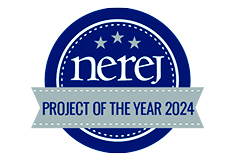News: Spotlights
Posted: July 28, 2011
Warren Kirshenbaum - Many incentives available for developers/owners that provide savings for green development
There are powerful incentives that allow developers or owners to accelerate depreciation, receive grants, tax credits, and other incentives (give-backs) that can provide significant savings and/or recoup money spent when they build with, or upgrade to high efficiency lighting, geothermal HVAC, remediate environmental contamination, or install solar panels. Not only can these give-backs provide 40%-60% of a project's equity (in 2011), but green features are quickly becoming a part of tenants' and buyers' decisions when thinking about leasing or purchasing a space, thereby making or breaking a deal.
Congress enacted many of these give-backs in the Economic Stimulus Act of 2008, however many programs sunset by December 31, 2011.
Specifically, Title 26 of the United States Code provides, in Section 48 for an Investment Tax Credit (ITC) as well as allowing for short-term renewable energy project depreciation. MACRS (the Federal Modified Accelerated Cost-Recovery System) allows the recovery of investments in certain property through depreciation deductions, and 26 USC Section 168 specifies that renewable energy technologies can be depreciated as five year property. However, the Tax Relief, Unemployment Insurance Reauthorization, and Job Creation Act of 2010 allows 100% depreciation in a single year for commercial solar installations, but this depreciation allowance expires on December 31, 2011, so you have to act fast.
Adding to the above, the Section 1603 Treasury Grant Program provides that, in lieu of the ITC, a Federal grant of 30% of the cost of renewable energy installations will be made, but only if construction has "commenced" by December 31, 2011. Extension of these programs is uncertain due to the current debate on the extension of the debt ceiling, spending cuts, and/or tax increases. Nevertheless, we do, at a minimum, have until December 31, 2011 to commence projects that capture these incentives extremely lucrative incentives.
Furthermore, the Energy Policy Act of 2005's 179D Ruling allows a tax deduction of up to $1.80 per square to commercial property owners and tenants that built (or upgraded) energy efficient properties between 11/2006 and 12/31/2013. 179D covers improvements to interior lighting, HVAC, and the building envelope.
The installation of solar panels provides revenue both from the sale of the electricity produced and of the Solar Renewable Energy Credits (SREC). An owner of solar equipment earns an SREC for each one megawatt-hour of electricity produced. The Mass. Department of Energy Resources approved an SREC market to begin in January 2010, and has set a renewables portfolio standard that requires electricity suppliers that serve retail customers to include 15% renewable energy in the electricity they sell by December 2020. Electrical suppliers can buy SREC's to meet these standards, and the SREC market has established a price range of $285-$600 for each SREC.
Finally, Brownfields Tax Credits are available in Mass. to developers, owners, and lessees of property that have completed a DEP sanctioned environmental remediation. These remediation expenses may provide a valuable tax credit that can recoup a significant portion of cost by claiming and then monetizing the tax credit. The market for these credits traditionally ranges between 87-91 cents for each dollar of tax credit purchased. The tax credit certificate is easily transferable by application to the DOR, and can be used all in one year, or over a 5 year period.
Accordingly, developers and property owners that need to upgrade their buildings should be seriously considering adding "green" features to their facilities.
Warren Kirshenbaum is a real estate attorney and President of the Cherrytree Group, LLC, Needham, Mass.
Tags:
Spotlights
MORE FROM Spotlights
The New England Real Estate Journal presents the First Annual Project of the Year Award! Vote today!
The New England Real Estate proud to showcase the remarkable projects that have graced the cover and center spread of NEREJ this year, all made possible by the collaboration of outstanding project teams. Now, it's time to recognize the top project of 2024, and we need your vote!

Quick Hits







